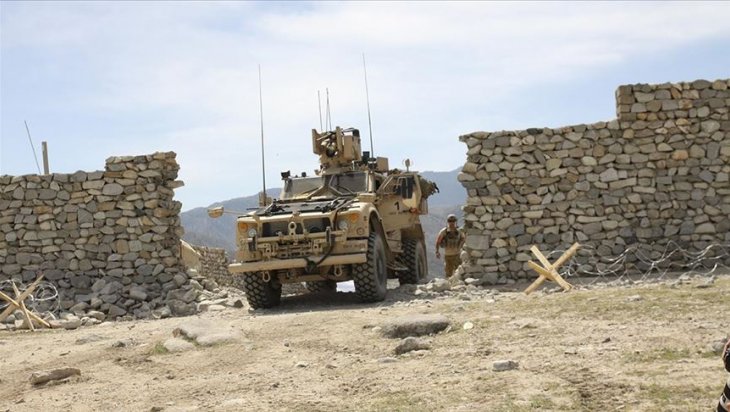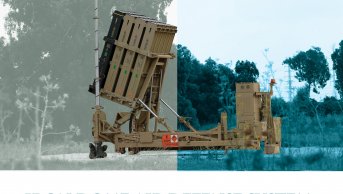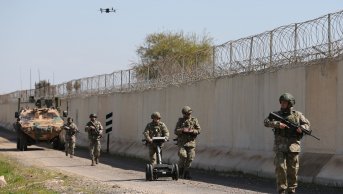The US and NATO Withdrawal from Afghanistan and Its Possible Effects

Although some powerful independent states were established on its territory, Afghanistan's history since the time of Alexander the Great has been the history of occupations by dominant powers in different times, which failed to achieve their objectives and were compelled to withdraw, leaving instability behind.
The US invasion of Afghanistan, which lasted for 20 years and is scheduled to end in September 2021, was no exception. At this point, there is enough data to have concerns over Afghanistan's future, for which international efforts cannot bring lasting results and which may quickly turn into a domestic crisis and create regional and global instability.
The Heritage that the US is about to leave behind
After capturing Kabul and removing the Taliban from power after the 2001 intervention in Afghanistan, the US was unable to form an effective Afghan administration outside Kabul or break the de facto Taliban rule in most of the country.
Including the areas between the administrations of Taliban and Kabul, which cause uncertainties from a military perspective, the Taliban claims to have direct and indirect influence in 50 to 60 percent of the country. If that’s the case, it is possible that the Taliban, which acts like a government and the main control mechanism in the country, may not want to compromise its power. Moreover, there is no local actor on the ground that can act as a deterrent for the Taliban at the national level.
Despite its rich resources that have attracted the attention of great powers throughout its history and its position at the crossroads of the eastern world, the economic situation in the country does not seem so promising and there is no indication of change in the near future.
Moreover, the United States had decided to reduce its economic aid to Afghanistan by $1 billion in 2020 and an additional $1 billion in 2021. However, the country is dependent on foreign aid, which covers 75% of the government budget. It is estimated that the reduction of foreign aid will adversely affect the political climate and security environment in Afghanistan. The fact that 95% of foreign support in security expenditures comes from the US raises one of the important questions about the withdrawal.
The mercenaries affiliated with private military companies (around 18,000 in number) constitute another possible security problem that is currently ignored. More than half of these mercenaries are employed by local actors. Kabul's lack of capacity in its fight against the Taliban, which will be reduced even further, shows that its dependence on mercenaries will increase. The gray zones where these private military companies are situated often raises questions about human rights violations and dubious financial activities on the ground.
Even when there were no signs or a date for withdrawal, the judicial processes about the relations between the mercenary groups and the Taliban, and its economic dimensions were frequently on the agenda. What will happen after the withdrawal of the local elements affiliated with these forces is one point that should be taken into consideration.
The economic and political problems expected after the withdrawal and the conflict between the Taliban and the central government may lead to new waves of Afghan refugees likely to put countries in the western transit route under heavy burden, as was the case in the Syrian civil war. Under these circumstances, post-withdrawal scenarios are mainly pessimistic.
Optimistic and Pessimistic Scenarios
In the optimistic scenario, the Taliban shows willingness to engage in negotiations that are free from foreign influence. In the pessimistic scenario, the Taliban, who controls a major portion of the country, does not sit on the table with Kabul after the US and NATO withdrawal, thereby transforming the nature of bilateral relations into a rapidly escalating conflict.
Already in the first three months of 2021 alone, more than 500 people have died and more than 1,200 have been injured, which is an increase of almost 30 percent compared to the same period last year. The withdrawal of foreign forces from the country creates the ideal environment for Taliban to pursue its objectives in line with its capacity and ideology.
What these two scenarios have in common is the fact that the Taliban has an ultimate goal of imposing its ideal form of governance and social fabric of the state. This keeps the possibility of a conflict on the agenda for Afghanistan that is likely to continue until the domination of one of the parties and the country may end up divided.
Such a possibility is strengthened by the involvement of actors of varying size in the region and their over-ambitious goals, each having a desire to exert its sphere of influence in order to achieve its intended objective. The foremost ones among these actors are Russia that occupied Afghanistan in the past, China that has spread to a vast region surrounding Afghanistan with its Belt-Road initiative, and India and Pakistan as secondary powers that will want to use the power vacuum that may arise in the country for their own national interests.
This article takes a closer look at the interests of these states in Afghanistan, but before doing that, it gives an insight into the US position and concerns over the situation after its withdrawal.
What kind of risks does the US create?
For the US, Afghanistan is on its way to becoming the next Vietnam in terms of the political, economic, and social aftermath and the effects thereof on its international profile, as well as its military outlook. That is because it is possible for the Taliban and al-Qaeda, with which they still have very close relations, to gain power. In addition, the opportunities that Afghanistan can offer to China and Russia, combined with the US withdrawal from Iraq, Syria and Africa, are one of the steps toward a very important breaking period in global competition.
Al-Qaeda, in its rhetoric, portrayed the image that the US withdrawal not only from Afghanistan, Iraq or Syria, but also from the entire Islamic world, was a victory. While at the same time, it also managed to continue its rhetoric legitimizing violence. The organization's close institutional and historical relationship with the Taliban makes one think that it will maintain this attitude in Afghanistan. Also, such an attitude may unravel as acts of violence and al-Qaeda may consolidate its power under the umbrella of the Taliban. Whether and how Afghanistan can respond to this threat with its own security capacity is an important question that mainly has pessimistic answers.
Even though there are statements from both the US and NATO that the support provided to the Afghan security forces will continue, the question remains as to how their capacity in the fight against the Taliban will be affected after the withdrawal, since their current capacity on the ground remains limited, further proven by Taliban’s recent military advances.
When it comes to the question of why the US decided to withdraw against all odds, the answer has to do with the domestic politics as the most important cause. Trump's promise of bringing the soldiers back home was very well-received and the new administration was forced to retain this position. In addition, the US has adopted a policy of preserving its power through avoiding excessive engagement and instead carrying out surgical interventions by UAV’s or similar vehicles.
However, the US approach also presents an opportunity for its rivals China and Russia to break the its hegemony on the ground.
Can China fill the void left by the US?
Not only the economic feasibility of China's Belt and Road initiative, but also its security depends on the situation in Afghanistan.
For China, Afghanistan is part of the Five Nations Railway, one of the main pillars of the Belt and Road initiative. The country is also one of the shortest routes to meet China's rapidly increasing energy needs. Its natural resources, estimated to be worth around 1 - 3 trillion dollars, also attract China's attention.
China needs a stable, predictable and controllable administration in Afghanistan that is willing to cooperate. Therefore, it is no coincidence that China is proposing new projects as a reward for the peace process in addition to its already-increasing infrastructure investments.
Nevertheless, one can foresee that a possible civil war in Afghanistan will negatively affect China's Belt and Road initiative due to the refugee issue as well as radical groups that gain further ground.
Therefore, China will most likely employ the fight against global terrorism in its discourse regarding Afghanistan, which may lead to new tensions over East Turkestan and the Uyghur issue. Experts predict that China could send a peacekeeping force to the region against terrorist activity. In 2018, China had trained Afghan troops in China against al-Qaeda and ISIS.
What is Russia's plan?
Afghanistan is the closing memory of one of the most important periods in Russian history, as the invasion of Afghanistan contributed significantly to the dissolution of the USSR. In this sense, Afghanistan stands as an important breaking point in the memory of the Russian state, which still tries to repair it.
Russia is one of the natural leaders in the race for influence on the ground, thanks to its close relations with some actors on the field—especially with the Taliban after its intervention in Afghanistan. It this context, it is possible to make sense of the meetings in Moscow between the Taliban and Afghan politicians in February and May 2019. Despite its troubled history with the Taliban and its affiliates, both the anti-US attitude in the country and its asymmetrical relationship with Afghanistan after the 19th century offers an important space for Russia.
According to the Taliban's rhetoric, the departure of foreign powers from the country is a new achievement in which the US, which is trying to increase its presence in the near-abroad after September 11, was made to withdraw. The Russian foreign policy, which established ties with the Taliban rather than the current administration, has reinforced this approach by not including the representatives of the Kabul government in the Russian-brokered negotiations. Russia, which is trying to regain its historical influence in Afghanistan—this time through the Taliban with which it was able to reconcile and has common objectives—sees an opportunity here to not only break the US influence, but also to hinder China's Belt and Road initiative.
India, Pakistan and Iran have plans for Afghanistan as well
Pakistan is frequently criticized for seeing Afghanistan as its backyard and meddling through the Taliban. Yet it is one of the main actors that will experience the direct effects of instability following the US withdrawal. The fact that Pakistan has entered a period in which it is able to exert more influence on Afghanistan through the Taliban will also provide indirect gains for China due to Pakistan’s very close economic and political relations with the latter in the recent period.
Pakistan's main rival in the region, India, can be expected to lose³ its influence in Afghanistan with the resurgence of the Taliban. Although it is predicted that the US will try to curb India's stance against the Taliban in order to reduce the influence that China may gain through Pakistan, it is unrealistic to expect neither the Taliban nor the Indian administration to be willing to let this happen. On the contrary, India is likely to be one of the biggest supporters of armed groups that will fight against the Taliban in an environment of conflict that the country may fall into.
Iran, which has close relations with al-Qaeda and the Taliban from time to time, has been following the process directly through the visits of delegations since the beginning of the peace process in Afghanistan. For Iran, the US withdrawal is vital for breaking the regional containment, its rivalry with India and Pakistan, and the possible influence of China, which is already increasing in the region. As one of the main commercial partners of the country, Iran strives to increase its economic influence through important infrastructure investments. Afghanistan is one of the cornerstones of Iran's regional policy and efforts to reach Central Asia. Regardless of what the new era will bring for Afghanistan; Afghan refugees, which Iran also uses for proxies, will be an important tool for the indirect interventions of both actors.
In summary, there are a lot of indicators regarding the changing local dynamics in Afghanistan, which has been one of the main focuses and determinants of global competition since at least the 19th century, and the current crisis will likely to take root rather than be resolved.
Under these circumstances, the dynamics on the ground and the measures of the actors close to the region will determine, just as often repeated in the history of the country, which actor will dominate the future of Afghanistan. However, until then, Afghanistan has the potential to cause major humanitarian crises as well as regional and global security problems.
This analysis was published on the Fikir Turu website on May 17, 2021, under the title "Tarih tekerrür etti. Peki, şimdi ne olacak? (History has repeated itself. So what now?)"









